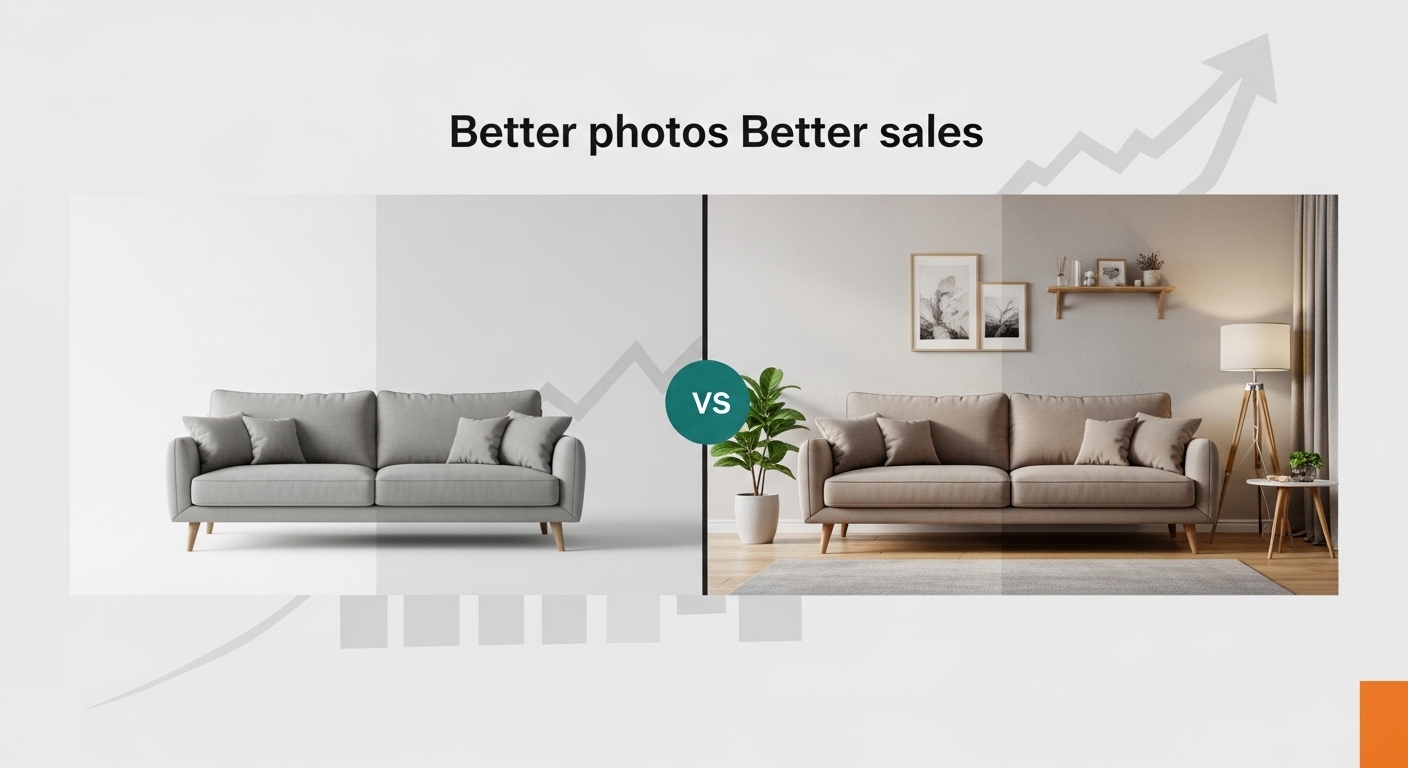Marketing has changed more in the last five years than in the previous fifty. The old playbook doesn’t work anymore. Today’s customers want real connections, personalized experiences, and brands that actually care.
If you’re still using the same marketing tactics from 2020, you’re already behind.
This guide will show you the marketing strategies that actually work in 2025. No confusing terms. No empty promises. Just real tactics you can start using today.
TL;DR
- In 2025, marketing is about mixing and matching traditional with digital in conjunction with new tools; new tools will be AI, video, personalized content and QR codes.
- Companies must focus on producing valuable content, establishing real customer relationships, and gauging results against specific KPIs.
- The appropriate combination of strategies will depend on your intended audience, goals, and budget.
Marketing in 2025: A Quick Snapshot
The marketing strategies in 2025 will shift towards personalization that is driven by data and AI. Brands will shift from chasing clicks to build experiences that are real, measurable and valuable. The greatest strategies integrate traditional and digital marketing to engage with customers on a deeper and more real level.
| Type of Marketing | Definition / Focus | Example / Usage |
| Traditional Marketing | Offline methods to promote products or services | TV/radio ads, Billboards, Flyers, Print media |
| Digital Marketing | Online strategies to reach and engage audiences | Social media, Email campaigns, Websites, Online ads |
| Content Marketing | Creating valuable, relevant content to attract and engage audience | Blogs, eBooks, Videos, Infographics |
| Social Media Marketing | Promoting your brand on social media platforms | Instagram campaigns, LinkedIn posts, TikTok ads |
| Email Marketing | Using email to nurture leads and communicate with customers | Newsletters, Promo emails |
| Influencer Marketing | Leveraging influential personalities to promote products/services | Instagram or YouTube influencer campaigns |
| SEO (Search Engine Optimization) | Optimizing website content to rank higher in search engines | Keyword research, On-page SEO, Backlinks |
| Paid Advertising (PPC) | Paying for ad placements to drive traffic and conversions | Google Ads, Facebook Ads |
| Event & Experiential Marketing | Creating live experiences to engage customers | Pop-up events, Product launches |
| Affiliate Marketing | Partnering with affiliates to drive sales and leads | Referral programs, Partner promotions |
| QR Code Marketing | Bridging offline and online through scannable codes | Flyers linking to landing pages, Digital menus |
What Makes a Good Marketing Strategy?
A marketing strategy is simply your plan to tell people about your business. Think of it as a roadmap that shows you where to spend your time and money to get the best results.
Good marketing strategies have three things in common:
- Clear goals – You know exactly what you want to achieve
- A specific audience – You know who you’re talking to
- Measurable results – You can track what’s working
And the best part is you don’t need a huge budget to see results. You just need to focus on the right tactics for your business.
Traditional vs Digital Marketing: Understanding the Two Core Strategies
Before we dive into specific strategies, let’s talk about your two main choices.
Traditional Marketing
This includes the stuff you’ve seen forever:
- TV and radio ads
- Newspapers and magazines
- Billboards
- Flyers and direct mail
Traditional marketing still works for certain businesses. Local shops, restaurants, and service providers often get great results from local newspaper ads or community flyers.
Digital Marketing
This is everything that happens online:
- Social media posts
- Email campaigns
- Your website
- Online ads
- Blog content
Digital marketing gives you something traditional marketing can’t: instant data. You can see exactly who clicked your ad, opened your email, or visited your website.
Most businesses today need both. But if you’re choosing one, digital marketing usually gives you more bang for your buck.
Step-by-Step Guide: How to Build a Winning Marketing Strategy in 2025
Creating a marketing strategy sounds scary, but it’s actually pretty simple when you break it down.
Step 1: Define Your Target Audience for Maximum Impact
You can’t sell to everyone. The businesses that try to appeal to “everyone” end up appealing to no one.
Instead, create a picture of your ideal customer. Answer these questions:
- How old are they?
- Where do they live?
- What problems do they have?
- Where do they hang out online?
- What do they care about?
The more specific you get, the easier it becomes to create messages that actually connect.
Step 2: Set Clear and Measurable Marketing Goals
“Get more customers” isn’t a goal. It’s a wish.
Real goals look like this:
- Get 1,000 new email subscribers in 3 months
- Increase website visitors by 50% before summer
- Make 20 sales from Instagram by the end of the quarter
Notice how these goals have numbers and deadlines? That’s what makes them real.
Step 3: Discover Your Unique Value Proposition (UVP)
Why should someone buy from you instead of your competitor?
This is called your unique value proposition. It’s the one thing that makes your business special.
Maybe you offer faster shipping. Better customer service. Lower prices. Eco-friendly products. Whatever it is, make it crystal clear.
Lesson learned: At Design Shifu, we quickly learned that some of our clients had to deal with poor quality design from inconsistent freelancers or agencies. That is when we discovered our unique value proposition of unlimited, on-demand, high-quality design, fast turnaround, and consistent results. We learned this through listening intently to their pain points and both testing and iterating our service models until we arrived at the solution to their problems.
Step 4: Select the Right Marketing Channels
You don’t need to be everywhere. You just need to be where your customers are.
If you’re selling to teenagers, you need to be on TikTok, If you’re selling to business owners, LinkedIn makes more sense. If you’re selling to parents, Facebook and Instagram work great.
Pick 2-3 channels and do them really well instead of trying to do everything poorly.
Step 5: Create Content That Engages and Converts
Nobody wants to see boring ads all day. People want content that helps them, entertains them, or teaches them something new.
Create content that solves problems. Answer questions. Share stories. Show behind-the-scenes moments. Make people feel something.
Step 6: Track and Analyze Your Marketing Results
Here’s what you need to watch:
- How many people visit your website
- How many people buy your product
- How much it costs to get a new customer
- Which posts get the most engagement
- Which emails get opened the most
Check these numbers every week. If something’s not working, change it.
Top 10 Marketing Strategies That Work in 2025
Now let’s get into the specific tactics you should be using right now.
1. AI-Powered Marketing Tools for Small Businesses
Artificial intelligence isn’t just for tech companies anymore. Small businesses are using AI tools every day to:
- Write better email subject lines
- Create social media posts faster
- Predict which customers might buy next
- Answer customer questions instantly with chatbots
You don’t need to understand how AI works. You just need to use tools that have it built in. Many email platforms, social media schedulers, and customer service tools now include AI features that make your life easier.
2. Data-Driven Marketing: How to Use Analytics to Make Smarter Decisions
Every click, every sale, every email open gives you information. Successful businesses use this data to make better decisions.
For example, if you notice that emails sent on Tuesday mornings get opened more, send more emails on Tuesday mornings. If Instagram posts with customer photos get more engagement, post more customer photos.
It’s not complicated. Just pay attention to what’s working and do more of it.
3. Create Content That Actually Helps People
Content marketing is still one of the best ways to attract customers. But the rules have changed.
In 2025, focus on:
- How-to guides that solve real problems
- Video tutorials that show people exactly what to do
- Customer stories that prove your product works
- Interactive content like quizzes that engage people
Write like you’re talking to a friend. Skip the corporate jargon. Just be helpful and honest.
At Design Shifu, we created a series of Instagram carousel posts for a client’s product launch. The posts combined striking visuals, concise tips, and a strong call-to-action. Within a week, engagement increased by over 50%, and several leads came directly from those posts. It worked because the content was visually appealing, easy to consume, and directly addressed the audience’s needs
4. Social Media Marketing Strategies That Build Authentic Communities
Social media isn’t about posting ads. It’s about building relationships.
Here’s what works in 2025:
- Short videos showing your product in action (15-60 seconds)
- Behind-the-scenes content that shows the real people behind your brand
- Responding to every comment and message quickly
- User-generated content where customers share photos using your product
- Live videos where you answer questions in real-time
The biggest mistake businesses make? Only posting when they want to sell something. Post valuable content every day, then occasionally ask for the sale.
5. Video Marketing: Why Video Content Rules in 2025
Video is the king of content right now. People would rather watch a 2-minute video than read a 500-word article.According to Wyzowl’s 2025 report, 89% of businesses use video as a marketing tool, and 95% of video marketers say it plays an important role in their strategy.
Short videos (30 seconds to 2 minutes) are especially powerful, and 98% of consumers say they’ve watched an explainer video to learn about a product or service. In fact, 87% have been convinced to purchase after watching one.
Easy videos you can create today:
- Show how your product works
- Answer common questions
- Share customer success stories
- Give a tour of your business
- Show how you make your product
You don’t need fancy equipment. Your smartphone works great. Just make sure you have good lighting and clear audio.
6. QR Code Marketing: Bridge Offline and Online Engagement
QR codes are having a huge comeback. During the pandemic, everyone got comfortable scanning codes with their phones. Now, smart businesses are using them everywhere.
Here’s why QR codes are so powerful in 2025:
- They’re Easy to Use
- No typing. No searching. Just point to your phone and scan. This makes it super simple for customers to take action right away.
- They Connect Offline to Online
- Put a QR code on your business card, it takes people to your website. Put one on your product packaging, it takes them to a tutorial video. Put one on a poster, it takes them to a special discount.
- They Track Results
- You can see exactly how many people scanned your code, when they scanned it, and where they were when they scanned it. This data helps you understand what’s working.
Practical Ways to Use QR Codes:
- On packaging – Link to setup instructions or recipe ideas
- In stores – Let customers read reviews or compare products
- On receipts – Offer a discount on their next purchase
- At events – Collect email addresses or share your social media
- On business cards – Link to your portfolio or website
- In restaurant menus – Show nutritional information or allergen details
- On product displays – Share video demonstrations
- In real estate – Link to virtual tours or property details
At Design Shifu, we use QR codes to make our clients’ designs more interactive. For example, we added QR codes to social media templates and marketing brochures that link directly to live campaigns or portfolio showcases. One recent campaign drove over 35% more traffic to the client’s landing page just from scanned QR codes, proving that small additions can create measurable engagement.
Creating Effective QR Codes:
Making a QR code is simple and usually free. Tools like QR Code Generator, Bitly, or even Canva let you create codes in minutes.
Follow these tips:
- Test your code on multiple phones before printing
- Make the code big enough to scan easily (at least 1 inch x 1 inch)
- Add a clear call-to-action like “Scan for 20% off”
- Use a short URL underneath for people who can’t scan
- Track your scans to see what’s working
Common QR Code Mistakes to Avoid:
- Making the code too small to scan
- Not testing before printing hundreds of copies
- Linking to a page that’s not mobile-friendly
- Using a code without explaining what it does
- Forgetting to track your results
The best part about QR codes? They’re incredibly cheap to implement but can drive massive results when used creatively.
7. Voice Search Optimization: How to Prepare for Conversational Search
More people are asking Alexa, Siri, and Google Assistant to find things instead of typing.
This changes how you need to write content. Voice searches are longer and sound more like natural conversation.
Instead of optimizing for “best pizza restaurant,” optimize for “where can I find the best pizza near me?”
Write content that answers specific questions. Use conversational language. Think about what people would actually say out loud.
8. Purpose-Driven Marketing: How to Build a Brand That Truly Connects
Today’s customers want to support businesses that care about the same things they do.
If you support environmental causes, talk about it. And If you source materials ethically, show it. If you donate to local charities, share it. This isn’t about being fake. It’s about being honest about your values. People connect with businesses that stand for something.
Lesson we learned: When we were first starting out, we wanted to develop designs that authentically connect with the audience of the client. We became familiar with the brand story and the goals of the project and produced visuals and campaigns that not only looked appealing but encouraged interaction and generated results. I wish I would’ve known from the beginning that listening to the client and their audience first always makes the world of difference.
9. Personalized Marketing: How to Make Every Customer Feel Seen
Generic messages don’t work anymore. People expect you to know them.
Simple ways to personalize:
- Use their name in emails
- Recommend products based on past purchases
- Send birthday discounts
- Show different website content based on their location
- Remember their preferences
Even small touches make a big difference. When someone feels like you actually see them as a person, they’re much more likely to buy.
10. Omnichannel Marketing: Creating a Seamless Cross-Platform Experience
Your customer might discover you on Instagram, visit your website on their laptop, and buy in your physical store. That’s normal now.
Omnichannel marketing means creating a smooth experience no matter how someone interacts with you.
Make sure:
- Your brand looks the same everywhere
- Your prices are consistent across all channels
- Customers can start on one channel and finish on another
- You can track customer interactions across platforms
For example, if someone adds something to their cart on your website but doesn’t buy, send them an email reminder. If they visit your store, your staff should be able to see their online purchase history.
Common Marketing Mistakes to Avoid
Even the best strategies fail if you make these mistakes:
- Trying to Do Everything at Once
- Start with 2-3 strategies. Master them. Then add more.
- Ignoring Mobile Users
- More than half of all internet traffic comes from phones. If your website doesn’t work perfectly on mobile, you’re losing sales.
- Being Too Promotional
- Follow the 80/20 rule: 80% helpful content, 20% promotional content.
- Not Testing Different Approaches
- Try different headlines, images, and calls-to-action. Small changes can make big differences.
- Giving Up Too Soon
- Marketing takes time. Most strategies need 3-6 months before you see real results.
How to Measure Marketing Success: KPIs and Metrics That Matter
You need to track the right numbers. Here are the most important ones:
| Metric | What It Measures | Key Insight / Goal |
|---|---|---|
| Website Traffic | How many people visit your site each month. | Track whether your audience is growing over time. |
| Conversion Rate | Percentage of visitors who buy something or sign up. | Indicates how effective your website is at turning visitors into customers. |
| Customer Acquisition Cost (CAC) | How much you spend to get one new customer. | Helps assess the efficiency of your marketing spend. |
| Return on Investment (ROI) | For every dollar spent on marketing, how many dollars you earn back. | Shows overall profitability of your marketing efforts. |
| Email Open Rate | Percentage of people who open your emails. | Aim for a healthy open rate of 20–30%. |
| Social Media Engagement | Number of likes, comments, shares, and interactions on your posts. | Measures how well your content connects with your audience. |
Check these numbers every week. Set up a simple spreadsheet or use tools like Google Analytics to track everything automatically.
Action Plan: How to Implement Your Marketing Strategy Effectively
You’ve learned the strategies. Now it’s time to use them.
Here’s your action plan:
This Week:
- Write down your top three marketing goals
- Choose two social media platforms to focus on
- Set up basic tracking with Google Analytics
This Month:
- Create your first QR code campaign
- Post valuable content at least three times per week
- Send your first email newsletter
This Quarter:
- Launch one AI-powered tool to save time
- Create five helpful videos
- Start tracking your key metrics weekly
What I Wish I Knew: When I first started marketing, I tried to do everything at once and got overwhelmed. I wish I had focused on just one or two strategies and done them well. Starting small and being consistent works way better.
Key Takeaways
- A good marketing strategy starts with clear goals, audience research, and a strong value proposition.
- Both traditional (print, events, radio) and digital (SEO, social, PPC, email) marketing matter, success often comes from combining both.
- Content marketing, social media, video, and personalization remain high-impact strategies in 2025.
- QR codes are a simple yet powerful way to bridge offline and online engagement.
- Avoid common mistakes like ignoring data, chasing trends without strategy, or spreading yourself too thin.
- Use analytics and metrics to measure success and adjust campaigns in real time.
- The future of marketing lies in AI-powered tools, omnichannel experiences, and purpose-driven branding.
Final Thoughts
Marketing in 2025 isn’t about shouting louder than your competitors. It’s about building real relationships with real people.
The businesses that win are the ones that:
- Actually help their customers
- Create content people want to share
- Use technology to work smarter
- Stay consistent even when results are slow
- Adapt quickly when something isn’t working
You don’t need a massive budget or you don’t need to be on every platform. You just need to focus on strategies that work for your specific business and your specific customers.
Start small. Pick one or two strategies from this guide. Master them. Then add more. The best time to start was yesterday. The second best time is right now.
What strategy will you try first?
FAQs
What is the most effective marketing strategy in 2025?
The leading marketing strategies in 2025 are centered on content marketing, video marketing, and personalization. The companies that achieve the highest engagement and conversion rates are those that provide value through useful content and benefited from tailored experiences driven by data.
Is traditional marketing still relevant in 2025?
How can small businesses compete with big brands in marketing?
What are the benefits of QR code marketing in 2025?
How is AI used in marketing today?
How do I know if my marketing strategy is working?
What is the biggest marketing mistake to avoid in 2025?





